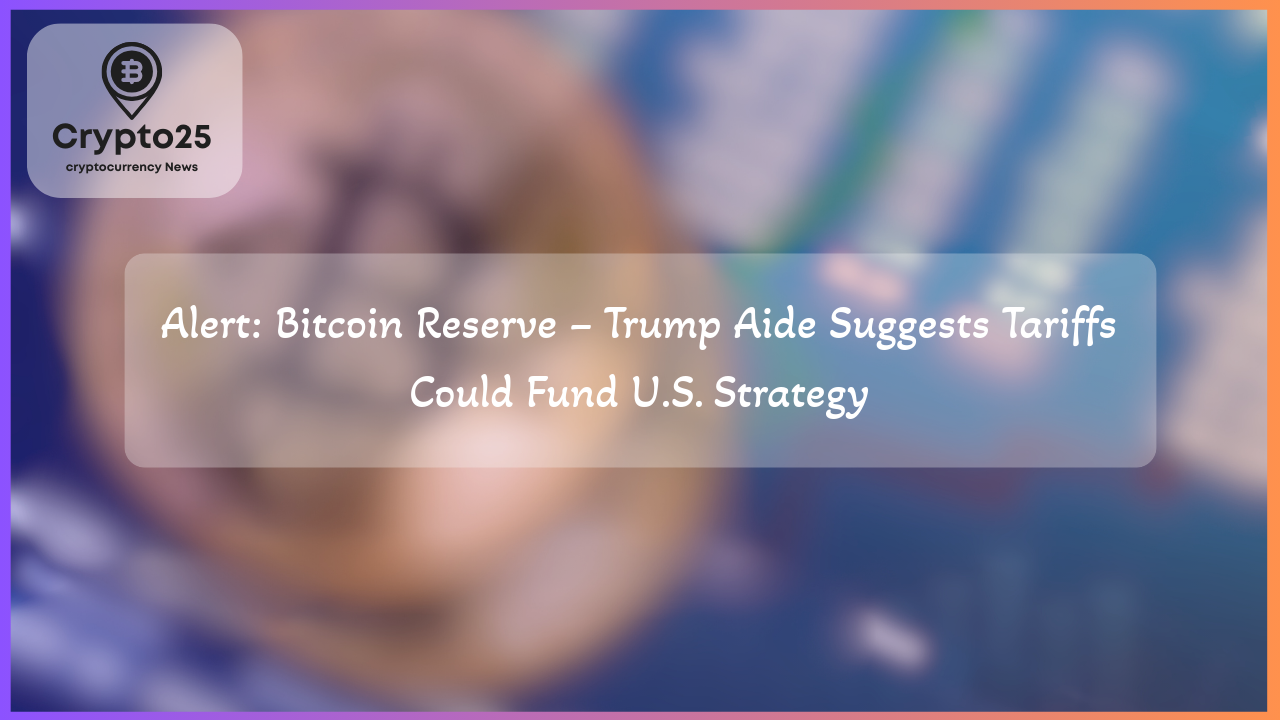
The growing intersection of cryptocurrency and U.S. policy took center stage recently as Bitcoin advocate Anthony Pompliano held a groundbreaking interview with Bo Hines, Executive Director of President Donald Trump’s Council of Advisers for Digital Assets. This high-level conversation provided crucial insights into the administration’s strategy for creating a Bitcoin reserve, stablecoin regulations, and innovative economic mechanisms to integrate crypto into national policy frameworks.
## U.S. Strategic Bitcoin Reserve: A Game-Changer in Crypto Policy
One of the key highlights of the interview focused on the administration’s plans to establish a U.S. strategic Bitcoin reserve. Bo Hines underscored the administration’s commitment to acquiring Bitcoin in ways that would avoid increasing the tax burden on American citizens. According to him, this approach represents a paradigm shift in how governments can integrate digital assets into their economic strategies.
The plan involves substantial innovation, including leveraging tariff revenues to fund Bitcoin purchases. This concept becomes particularly intriguing when viewed in light of recent discussions surrounding global tariffs and economic policies. A White House economic projection revealed that a global 10% tariff could boost the U.S. economy by $728 billion. By redirecting some of these revenues into Bitcoin acquisitions, the administration aims to grow its holdings “aggressively” while fostering economic resilience within a rapidly evolving global financial landscape.
## Exploring the Role of the BITCOIN Act in U.S. Crypto Adoption
Senator Cynthia Lummis’ ambitious BITCOIN Act of 2025 was another major topic broached during Pompliano’s interview with Hines. The proposed legislation mandates the U.S. Treasury to acquire 200,000 BTC annually over a five-year period, ultimately building a reserve of 1 million Bitcoin. This groundbreaking legislation indicates growing congressional interest in digital assets as a strategic resource akin to gold.
Hines highlighted a notable funding mechanism within the Act that involves revising the valuation of existing gold reserves. Presently, gold certificates held by the Treasury are valued at approximately $43 an ounce, but market valuations hover around $3,100 an ounce. By recalculating these certificates to reflect current market values, the government could access significant additional funding to bolster its Bitcoin reserves. As Hines observed, “There are literally countless ways we can approach this, and we recognize the importance of maximizing these opportunities.”
In addition to the BITCOIN Act, the conversation touched on the increasing interagency cooperation required to align cryptocurrency regulations across various U.S. governing bodies. Stablecoins—another critical pillar of the administration’s crypto strategy—were discussed in regard to regulation, transparency, and security.
| Title | Details |
|---|---|
| Market Cap | $1.2 Trillion |
## How Bitcoin Could Reshape U.S. Economic and Trade Policies
The administration’s recognition of cryptocurrency as both a financial tool and a strategic asset shows a broader understanding of Bitcoin’s transformative potential. The integration of Bitcoin into U.S. economic policy is explored beyond traditional fundraising methods, showing alignment with global markets. Hines noted how “high IQ individuals within the administration” are working tirelessly to ensure the U.S. gains a competitive edge in this digital arms race.
Innovative funding models—such as revalued assets and tariff revenues—are designed to provide fiscal neutrality, helping the country adapt to cryptocurrency innovations without straining taxpayers. This approach may lead to a greater role for Bitcoin in the mainstream U.S. economy, particularly as other nations begin exploring similar strategies. Hines emphasized that “everything is on the table,” signaling dedication to developing an adaptable, future-proofed approach to Bitcoin.
Transitioning to the global stage, these developments position Bitcoin not merely as a decentralized financial asset but as a national asset class with potential ramifications on trade and diplomacy. By accumulating Bitcoin reserves and crafting forward-thinking policies, the U.S. aims to solidify its leadership in the crypto economy.
Pompliano’s video recaps the interview, highlighting ten actionable insights from his conversation with Hines, while the full interview can be accessed on his YouTube channel. With these groundbreaking initiatives, it’s clear the relationship between Bitcoin and global governments is entering a new, transformative phase.
